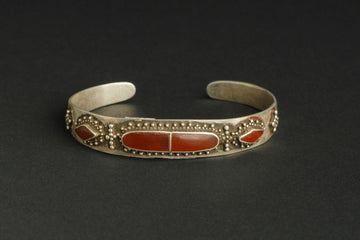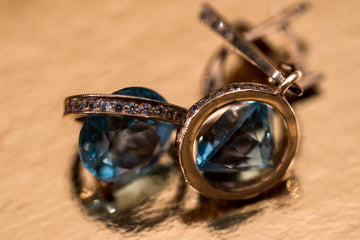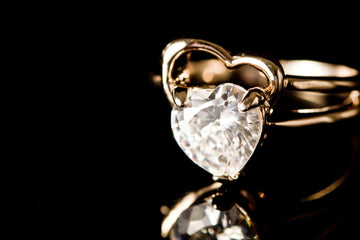A heritage bracelet holds more than just beauty. It carries meaning, memory, and history. It may have been passed down through generations, marking special milestones along the way. So when something isn’t quite right about how it looks, feels, or fits, it’s probably time to take a closer look. Waiting too long could make things worse, turning an easy fix into a bigger problem.
Preserving the quality of a heritage bracelet is about more than keeping it polished. Even subtle signs of wear that may seem small can signal deeper issues that deserve professional eyes. Whether it's changes in how the bracelet secures, minor damage in the metalwork, or a missing stone, acting quickly helps protect its story. Here are a few signs that your bracelet may need professional attention.
Visible Wear And Tear Can Add Up
Not every scratch or dent screams for a repair right away, but surface wear can spread faster than expected. Repeated contact with hard surfaces, exposure to makeup and skin products, or even brushing against clothing over time will wear down the finish of a bracelet. What starts as tiny surface damage can lead to loosening settings or discoloration, especially in older or delicate pieces.
Here are some signs to keep an eye out for:
- Scratches along the metal surface that weren’t there before
- Dents along edges or near joints
- Fading in either brightness or surface texture
- Tarnishing that doesn’t go away with a soft cloth
Some of these might seem purely cosmetic at first, but over time they may affect the structure of the bracelet, especially around links or stone settings. Wearing the piece regularly without servicing it can cause the damage to grow. For example, a bracelet may lose its original curve or shape, making it uncomfortable to wear and harder to close securely. If these marks are catching your eye, it’s worth getting a jeweler to take a closer look.
Loose Or Missing Stones Require Quick Action
If your heritage bracelet includes stones, whether diamonds, rubies, or a mix, watching them closely is key. All it takes is one fragile prong or a weakened setting for a stone to fall out. Sometimes it's easy to tell. You tap the bracelet gently and hear a faint rattle. Other times, it's harder to spot until it's too late and something's gone missing.
Here’s what to check for during your own quick at-home inspection:
- Stones that shift or tilt when touched
- Prongs that appear thin, uneven, or bent
- Gaps or empty spaces where stones once sat
- Dust or debris settled into settings, changing the way the stones reflect light
Even if a stone seems secure now, loosened settings tend to wear even more with continued movement. And when a stone goes missing, finding an identical match can be hard, especially if the bracelet is antique or custom-designed. Taking action at the first sign of movement helps prevent both loss and added expense.
Spot something that looks off? Now’s the time to stop wearing the bracelet and have it checked by someone who knows how these settings work. Acting early can preserve the original stone, setting, and the design's full charm.
Check for Clasp and Link Trouble
Your bracelet’s clasp might be small, but it plays one of the biggest roles. It keeps everything together. If it starts sticking, refusing to close fully, or randomly popping open, that’s your cue to stop wearing the bracelet and get it looked at. The same goes for any signs of bending, wiggling, or uneven spacing around the links. With regular wear, metal parts like hinges or jump rings can slowly loosen or warp.
Some common warning signs include:
- Clasp struggles to snap closed or seems too tight
- You notice a small gap between two links where none used to be
- The bracelet slips off easier than it did before
- The hinge on the clasp feels soft or overly flexible
If you notice any of the above, your bracelet could be at risk of slipping off without warning. Especially in social or busy settings, it’s easy to lose a bracelet with a weak or faulty clasp before you even notice. Instead of continuing to force the clasp or settle for a loose fit, plan to have it examined. Fixing these gaps early can prevent a bigger heartbreak, like losing the entire piece.
Watch the Color and Clarity of the Materials
You probably remember what your bracelet looked like the day you first received it. If it suddenly looks duller, darker, or cloudy, that’s worth paying attention to. Over time, metals like gold, silver, or platinum can change appearance from exposure to body oils, air, chemicals, and even temperature changes. Dallas summer heat, for example, can speed up some of this wear.
Gemstones can also lose their sparkle for several reasons, including:
- Surface scratches across the face of a stone
- Buildup from lotions, soap, or makeup in crevices
- Internal flaws becoming more visible through wear
- Cloudy film forming on or under the stone
A change in the way your bracelet reflects light might mean its materials were affected beyond the surface level. While a soft polish cloth works for light cleaning, there’s a limit. Some of these color changes might signal structural damage or long-term deterioration, which should always be addressed by an expert. Leaving the piece untreated carries the risk of corrosion, weakened settings, or bigger repairs later on.
Preserve the Value With Routine Checkups
A heritage bracelet, no matter how sturdy, benefits from regular checkups. Just like you’d take a car for service or have your AC looked at ahead of a typical Dallas summer, treating fine jewelry as something that deserves consistent care makes a big difference. Waiting until something falls apart or disappears usually leads to more cash and effort to restore it.
Getting into a habit of having your bracelet checked even once a year is enough to catch things before they grow. A professional review doesn’t just spot polish issues. It can uncover repairs, replacing damaged prongs, fixing bent links, and sealing worn-out clasps. This type of upkeep keeps the piece comfortable to wear, safe from damage, and visually the same as when it was passed down or crafted.
Even if your bracelet hasn’t shown any obvious trouble, the passage of time alone can cause enough change to need attention. If it’s been a while since any kind of inspection or you’ve been wearing the bracelet often, it’s probably a good time to schedule a visit with someone who handles heritage items with care.
Keeping Your Heritage Bracelet Timeless
Spotting small problems early is the best way to steer clear of bigger ones. From the color of metal to the tightness of stones, every piece of a heritage bracelet plays a role. While some signs of aging are natural, leaving things unnoticed can lead to irreversible damage. Taking the time to check for clues like a loose clasp, dull gemstones, or fine scratches helps extend its life.
A piece that holds personal meaning deserves more than just a quick clean every few years. Whether it was passed down from a loved one or custom-made just for you, it likely has a story you want to carry forward. Regular care and professional attention help that piece stay strong, beautiful, and well-guarded for whatever the future brings.
If you’ve noticed signs of wear, now’s a great time to have a heritage bracelet professionally evaluated. At L'Heritage Fine Jewelry, we’re here to help you protect what matters most. Explore how we restore and care for every detail by learning more about a heritage bracelet and how to keep it lasting for generations.





